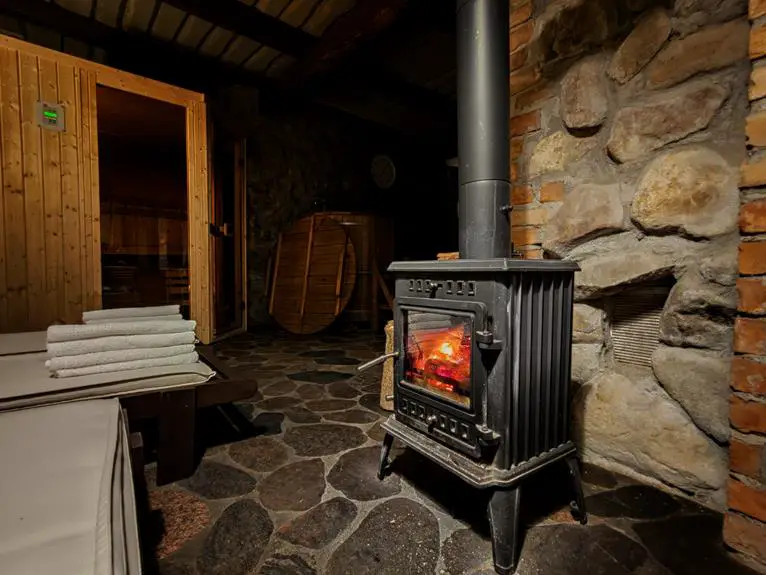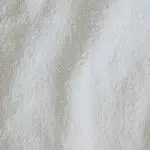If you're seeking a fabric that embodies both durability and warmth, twill may be just what you're looking for.
In this brief exploration, we'll delve into the insulating properties of twill fabric, its unique weave, and how it compares to other textiles in terms of thermal regulation.
Whether you're considering twill for outerwear, workwear, or everyday attire, understanding its warmth and layering potential is key to mastering its use in cold weather.
We'll also discuss factors that influence twill's warmth, offer tips for layering twill garments effectively, and explore the best practices for maintaining warmth in twill clothing.
Let's unravel the warmth of twill fabric together.
Key Takeaways
- Twill fabric is known for its insulating abilities and provides warmth without bulk.
- The unique diagonal weave pattern of twill fabric creates tiny air pockets that trap heat close to the body, making it a reliable option for cold weather clothing.
- Twill fabric is breathable and allows for air circulation, aiding in thermal regulation and preventing overheating.
- Layering twill garments enhances its insulating abilities and makes it versatile for various climates and temperatures.
Understanding Twill Fabric Weave
Understanding twill fabric weave can help you appreciate its unique characteristics and versatility.
Twill fabric is distinguished by its diagonal weave pattern, which is created by passing the weft thread over one or more warp threads and then shifting it to the next warp thread. This construction results in a strong, durable fabric that's renowned for its breathability and warmth.
The way twill fabric is woven also makes it ideal for layering techniques, as the diagonal pattern allows for air to circulate, aiding in thermal regulation. This makes twill a great choice for garments that need to provide insulation while also allowing the wearer to stay comfortable in changing temperatures.
When comparing insulation properties, twill fabric often outperforms plain weaves due to its unique weave structure.
Insulating Properties of Twill
Twill fabric is known for its insulating abilities, making it a great choice for cold weather. Its unique weave creates a tight, dense structure that helps trap heat close to the body.
When looking for a warm and durable fabric for chilly climates, twill is a reliable option to consider.
Twill's Insulating Abilities
Exploring twill's insulating abilities can help you understand its warmth and comfort. Twill fabric's insulating properties make it a great choice for cold weather. Here are some key points to consider:
- Thermal Regulation: Twill fabric helps regulate body temperature, keeping you warm in cooler environments.
- Layering Tips: Twill works well as a middle layer in cold weather clothing, providing insulation without bulk.
- Comfort: The tight weave of twill fabric contributes to its insulating properties while still allowing for comfort and flexibility.
- Breathability: Despite its warmth, twill remains breathable, preventing overheating.
- Fabric Comparison: When comparing fabrics for cold weather, consider twill for its balance of warmth, comfort, and breathability.
Understanding twill's insulating abilities can help you make informed choices for maintaining warmth and comfort in chilly conditions.
Twill for Cold Weather
Consider how twill fabric's insulating properties make it an excellent choice for staying warm in cold weather. Twill's weave creates tiny air pockets, providing natural insulation against the cold. Utilizing twill layering techniques enhances its insulating abilities.
When preparing for cold weather, incorporating twill into your wardrobe can be both functional and fashionable. Cold weather twill fashion and styling can include twill jackets, pants, and shirts, offering warmth without the bulk. Additionally, layering twill garments can trap heat, making it an ideal choice for staying comfortable in chilly temperatures.
Whether it's a twill coat or a pair of twill-lined pants, the fabric's insulation capabilities make it a versatile option for combating the cold. Embracing twill in your cold weather attire ensures both style and warmth.
Thermal Regulation in Twill
When considering the thermal regulation of twill fabric, it's important to take into account its insulating properties, breathability, and overall comfort.
Twill is known for its ability to provide warmth in cooler temperatures while also allowing for breathability, making it a versatile option for various climates.
Understanding these aspects can help you make informed decisions about incorporating twill into your wardrobe for optimal thermal comfort.
Twill's Insulating Properties
You frequently feel comfortable and insulated when you wear twill fabric, as it efficiently regulates your body temperature. Twill's insulating properties make it an excellent choice for cold weather, providing warmth without bulk.
Here are some essential points to consider for understanding twill's thermal regulation:
- Twill fabric's unique weave creates tiny air pockets, which trap heat and provide insulation.
- Layering twill garments can enhance their insulating properties, allowing you to adjust to varying temperatures.
- Twill's ability to maintain warmth makes it a versatile option for outerwear in chilly conditions.
- When choosing twill clothing for cold weather, opt for heavier weights for increased insulation.
- Understanding the breathability of twill fabric is crucial for effectively regulating body temperature in different environments.
Twill's insulating properties make it an ideal choice for maintaining warmth in diverse cold weather conditions.
Breathability of Twill
To understand the thermal regulation in twill fabric, focus on its breathability, which directly impacts its ability to maintain a comfortable body temperature. Twill fabric is known for its breathability, allowing air to pass through the weave, making it an ideal choice for all seasons. This breathability helps in moisture wicking, ensuring that sweat and moisture are pulled away from the body, keeping you dry and comfortable. The unique weave of twill fabric also promotes airflow, preventing the fabric from sticking to the skin. This table summarizes the breathability and moisture-wicking properties of twill fabric:
| Properties | Description | Benefits |
|---|---|---|
| Breathability | Allows air to pass through the fabric weave, promoting airflow and comfort. | Regulates body temperature. |
| Moisture Wicking | Pulls moisture away from the body, keeping you dry and comfortable. | Prevents stickiness and discomfort. |
Comfort in Twill
Twill fabric offers an exceptionally comfortable wearing experience for several reasons.
- Insulation: Twill's unique weave provides excellent insulation, keeping you warm in cold weather without feeling bulky.
- Breathability: The fabric allows for airflow, preventing overheating and ensuring comfort in warmer temperatures.
- Moisture-Wicking: Twill efficiently wicks away moisture, keeping you dry and comfortable throughout the day.
- Softness: The fabric's soft texture offers a luxurious and comfortable feel against the skin.
- Versatility: Twill's ability to adapt to various climates ensures a consistently comfortable wearing experience.
Twill fabric's thermal regulation guarantees a cozy and comfortable feel regardless of the weather, making it an excellent choice for those seeking both warmth and breathability.
Comparing Twill to Other Fabrics
When comparing twill fabric to other fabrics, consider its warmth in relation to its weight and weave.
Twill fabric, known for its diagonal weave pattern, offers a balance of durability and comfort, making it a versatile choice for various activities. In comparison to fleece, twill fabric provides a more structured and substantial feel, offering better wind resistance and a more polished look. While fleece is lightweight and provides excellent insulation, twill fabric can be a better option for outdoor activities where a sturdier fabric is needed.
Twill's tighter weave also gives it a more formal appearance compared to fleece, making it suitable for a wider range of settings.
In outdoor activities, twill fabric's durability and wind-resistant properties make it a preferred choice. Its tighter weave provides better protection against the elements, making it a reliable option for activities such as hiking, camping, or skiing. Additionally, twill fabric's ability to maintain warmth without excessive weight makes it a practical choice for outdoor enthusiasts who require both mobility and insulation.
When comparing twill to other fabrics, its unique combination of strength, warmth, and structure makes it an excellent choice for outdoor activities where performance and comfort are essential.
Factors Affecting Twill's Warmth
Considering the tightness of twill's weave is crucial in understanding its warmth. Factors affecting twill's warmth include:
- Weave Tightness: The density of the weave affects warmth, with tighter weaves providing better insulation.
- Yarn Thickness: Thicker yarns used in twill fabric contribute to its warmth by trapping more air within the fabric.
- Fiber Type: Natural fibers like wool and cotton offer better warmth than synthetic fibers due to their insulating properties.
- Layering: Twill fabric can be layered for added warmth, as multiple layers trap more heat.
- Finishing Treatments: Some twill fabrics may undergo treatments to enhance warmth, such as brushing or raising the fibers to create a softer and warmer texture.
Understanding these factors can help you make informed decisions when choosing twill fabric for warmth. By considering weave tightness, yarn thickness, fiber type, layering, and finishing treatments, you can select twill fabric that best suits your warmth needs.
Best Uses for Twill in Cold Weather
In cold weather, twill fabric is ideal for layering under outerwear to provide additional warmth and insulation. Its tightly woven structure makes it a great choice for creating a thermal barrier against the cold.
When it comes to the best layering options, twill shirts or pants can be comfortably worn under winter coats or jackets, offering an extra layer of protection without adding excessive bulk. This makes twill a versatile choice for various winter activities, such as skiing, snowboarding, or simply going for a walk in chilly weather.
Additionally, twill's durability and wind-resistant properties make it suitable for outdoor adventures in cold climates, providing both comfort and protection from the elements.
Whether you're engaging in high-energy winter sports or simply braving the cold on a daily basis, twill fabric can be a reliable choice for maintaining warmth and comfort during cold weather.
Tips for Layering Twill Clothing
To maximize the warmth and versatility of twill fabric in cold weather, you can effectively layer twill clothing under your outerwear for added insulation and comfort. When it comes to layering twill clothing during winter, consider the following techniques:
- Base Layer: Start with a lightweight, moisture-wicking base layer made of materials like merino wool or synthetic fabrics to keep you dry and warm.
- Twill Shirt: Add a twill shirt over the base layer for extra warmth. The tightly woven fabric of twill provides excellent insulation.
- Vest or Sweater: Layer a vest or sweater made of wool or fleece on top of the twill shirt for added heat retention.
- Twill Jacket or Coat: Choose a twill jacket or coat as your outer layer. This will provide wind resistance and further insulation.
- Accessories: Complete your winter fashion ensemble by adding a scarf, gloves, and a beanie made from similar insulating materials.
Maintaining Warmth in Twill Garments
To maintain warmth in your twill garments, ensure proper insulation and layering to trap body heat effectively. Layering techniques play a crucial role in retaining warmth, especially in cold weather. By combining different types of clothing, you can create insulation that effectively retains body heat. When comparing fabrics for layering, consider the warmth-to-weight ratio and moisture-wicking properties. Here's a comparison of common fabrics for layering:
| Fabric | Warmth |
|---|---|
| Wool | High |
| Down | High |
| Fleece | Moderate |
| Synthetic | Moderate |
Wool and down are excellent choices for maintaining warmth, as they offer high levels of insulation. Fleece and synthetic fabrics provide moderate warmth and are suitable for milder cold conditions. Understanding the warmth and insulation properties of different fabrics can help you make informed choices when layering your twill garments. By utilizing the right layering techniques and selecting appropriate fabrics, you can ensure that your twill garments effectively maintain warmth in various weather conditions.
Frequently Asked Questions
Can Twill Fabric Be Used for Outdoor Activities in Cold Weather?
For outdoor activities in cold weather, twill fabric can be a good choice. It provides windproof and breathable designs, making it suitable for layering options. Its moisture-wicking properties help keep you dry and comfortable during your outdoor adventures.
What Are the Best Types of Twill Fabric for Keeping Warm in Winter?
For keeping warm in winter, twill fabric features a tight weave that provides insulation. Consider alternatives like flannel or fleece for added warmth. Layering with twill can also help trap heat effectively.
Are There Any Specific Care Instructions for Maintaining the Warmth of Twill Garments?
To maintain the warmth of twill garments, follow specific care instructions. Use cold water and mild detergent for washing, avoid high heat when drying, and store properly. These fabric maintenance practices will help ensure your twill clothing retains its warmth.
Can Twill Fabric Be Used for Making Outerwear for Extreme Cold Temperatures?
Yes, twill fabric can be used for making outerwear for extreme cold temperatures due to its durability and breathability. It offers a wide range of color options and style versatility, making it a practical choice for harsh weather conditions.
How Does Twill Fabric Compare to Other Materials in Terms of Warmth and Insulation?
When comparing materials for warmth and insulation effectiveness, twill fabric generally provides moderate warmth due to its tight weave. However, it may not offer the same level of insulation as heavier or more tightly woven fabrics.
- How to Deep Clean a Fabric Guitar Case Interior - June 25, 2025
- Stain Removal 101: Getting Grease and Dirt Out of Your Fabric Phone Case - June 25, 2025
- Can You Wash a Fabric Pencil Case? Yes, Here’s the Right Way to Do It - June 25, 2025







